✓ Accommodations✓ Flights✓ Rental Cars✓ Tours & Activities
Are you seeking an older Tokyo beyond the glassy skyscrapers and neon karaoke bars? Look no further than Taitō-ku, a district that embodies the city’s historic heart. This charming ward is home to a perfect blend of ancient temples and modern attractions, making it a must-visit place for those seeking authentic Japanese culture.
You’ll discover a district that has preserved its historical character while embracing contemporary elements. Visit the grand Asakusa temple, Senso-ji, with its iconic red lantern, explore the bustling seafood shops and beauty boutiques of Ameya-Yokocho market, or stroll through the graceful museums of Ueno Park. With its rich history and vibrant culture, Taitō-ku is a special place within Tokyo’s urban landscape.
Discovering Taitō-ku: Tokyo’s Historic Heart
Taitō-ku, a historic heart of Tokyo, offers a fascinating mix of cultural heritage and contemporary attractions. As you explore this vibrant district, you’ll uncover a rich tapestry of history, culture, and entertainment.
The Perfect Blend of Old and New Japan
Taitō-ku represents the perfect blend of traditional and modern Japan, where centuries-old temples stand alongside contemporary museums and shopping districts. The district’s rich history dates back to the Edo period (1603-1868), and you can still experience this heritage through its preserved architecture, traditional crafts, and cultural practices.
Ueno is home to the oldest and first public park established in Tokyo in 1873. Ueno Park is the home to some of Tokyo’s most splendid cultural sites, including temples, national, art, nature, and science museums, and Ueno Zoo. Across from the park is the bustling marketplace of Ameyoko, a place where you can find discount merchandise sold by energetic street vendors to brand name shops and upper-end department stores.
| Area | Main Attractions | Experience |
|---|---|---|
| Asakusa | Senso-ji Temple, Nakamise Shopping Street | Historic temple town atmosphere |
| Ueno | Ueno Park, Museums, Ueno Zoo | Cultural institutions and natural beauty |
| Yanaka | Traditional shops, Yanaka Ginza | Old-world charm and local culture |
Getting to and Around Taitō-ku
Navigating Taitō-ku is straightforward with excellent public transportation options, including the JR Yamanote Line, Tokyo Metro, and convenient bus routes connecting all major attractions. You can reach most parts of Taitō-ku within 15-20 minutes by train from Tokyo Station, making it an accessible destination for both day trips and longer stays.
The district is divided into several distinct areas, each with its own character. Walking is often the best way to explore Taitō-ku, allowing you to discover hidden alleyways, traditional shops, and local eateries that showcase the authentic culture of old Tokyo.
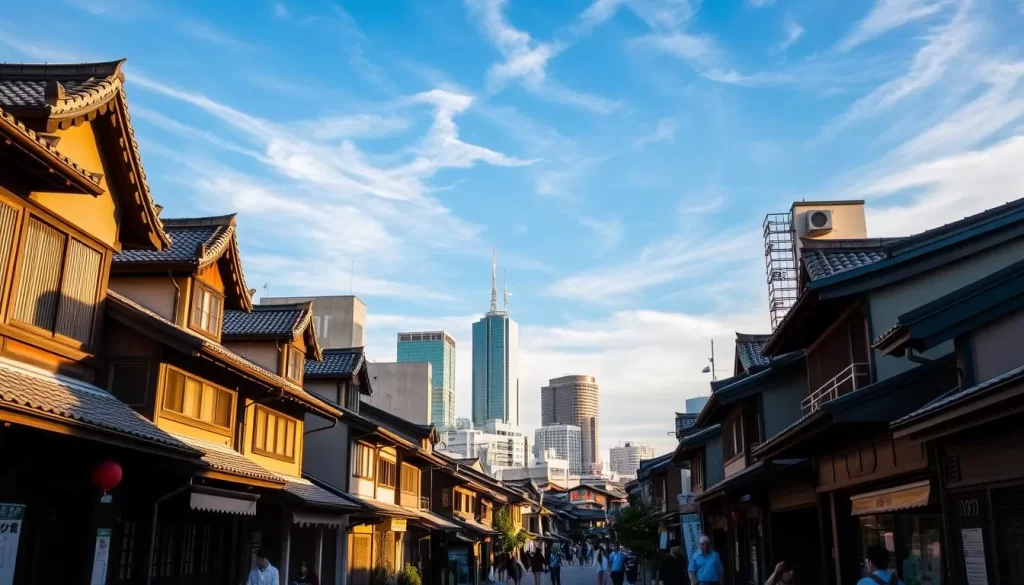
As you explore Taitō-ku, you’ll encounter a diverse range of people, from locals to tourists, all contributing to the district’s vibrant atmosphere. The blend of old and new, tradition and innovation, makes Taitō-ku a fascinating place to explore, with a rich history that is palpable throughout the district.
Sensō-ji Temple: Tokyo’s Oldest Buddhist Temple
Sensō-ji Temple, Tokyo’s oldest Buddhist temple, is a must-visit landmark in Taitō-ku. This historic temple has been a cornerstone of Tokyo’s spiritual landscape since its founding in 645 CE, making it an essential destination for understanding the city’s rich religious history.
As you approach the temple, you’ll be greeted by the iconic Kaminarimon Gate, a stunning entrance that has become synonymous with Tokyo’s cultural identity.
The Iconic Kaminarimon Gate
The Kaminarimon Gate is an awe-inspiring sight, featuring a massive 700kg red lantern adorned with Japanese kanji symbols and a wooden dragon carving. As you pass through the gate, look out for the statues of the Shinto and Buddhist gods that guard the entrance.
Nakamise Shopping Street
As you walk through the Kaminarimon Gate, you’ll enter Nakamise Shopping Street, a 250-meter stretch lined with nearly 90 traditional shops selling Japanese souvenirs, crafts, and local snacks. This historic street has been serving pilgrims and visitors for centuries, offering a glimpse into old Japan.
Main Temple Grounds and Pagoda
The main temple grounds are home to the impressive five-story pagoda, numerous smaller shrines, and the main hall housing the sacred statue of Kannon, the Buddhist goddess of mercy. According to legend, this statue was miraculously pulled out of the nearby Sumida River by two fishermen in AD 628. The temple complex attracts millions of people each year, offering a unique experience throughout the day.
Whether you visit in the morning to avoid crowds or in the evening when the buildings are beautifully illuminated, Sensō-ji Temple is a landmark that embodies the spirit of Tokyo. As you explore this historic place, you’ll discover the rich cultural heritage that makes Taitō-ku so special.
Ueno Park: Tokyo’s First Public Park
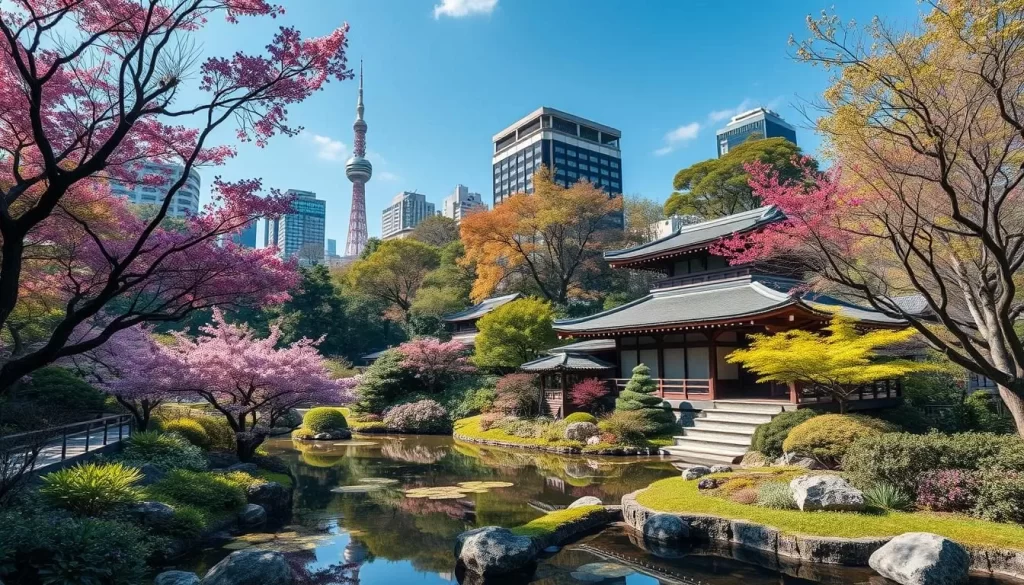
As you step into Ueno Park, you’re immediately enveloped in a serene atmosphere that offers a tranquil escape from Tokyo’s bustling streets. Established in 1873, Ueno Park holds the distinction of being Tokyo’s first public park and remains one of its largest green spaces, offering a welcome respite from the urban landscape.
Ueno Park is a vibrant green oasis that caters to a wide range of interests. Whether you’re looking to enjoy nature, explore cultural attractions, or simply relax, this park has something for everyone. The park’s diverse landscapes and attractions make it a favorite among locals and tourists alike.
Cherry Blossom Viewing Spots
During cherry blossom season, typically from late March to early April, Ueno Park transforms into one of Tokyo’s most popular hanami (blossom viewing) spots. With over 1,000 cherry trees creating stunning pink canopies along its main pathways, it’s a breathtaking sight. For the best cherry blossom viewing experience, arrive early in the morning to secure a spot for a traditional hanami picnic, or visit in the evening when the trees are illuminated for a magical nighttime atmosphere.
Shinobazu Pond and Bentendo Temple
Shinobazu Pond, divided into three sections, is a highlight of Ueno Park. The pond features a beautiful lotus garden that blooms spectacularly in summer. At its center lies the picturesque Bentendo Temple, dedicated to the goddess Benzaiten. This temple is a must-visit attraction within the park, offering a serene and culturally rich experience.
Seasonal Events and Festivals
Ueno Park hosts numerous seasonal events throughout the year, making it a dynamic destination that offers something new with each visit. From spring flower festivals to summer firefly viewings, autumn foliage illuminations, and winter light displays, the park is alive with activity and beauty throughout the seasons. These events attract both locals and tourists, making Ueno Park a vibrant cultural hub in the heart of Tokyo.
Tokyo National Museum: Japan’s Cultural Treasure House

Located in Ueno Park, the Tokyo National Museum is Japan’s oldest and largest museum, boasting an impressive collection of over 110,000 artifacts. As you explore the museum, you’ll discover a vast array of Japanese art and artifacts, including ancient pottery, samurai swords, kimonos, and ukiyo-e woodblock prints.
Japanese Art and Artifacts Collection
The Japanese Gallery, also known as Honkan, showcases the world’s most comprehensive collection of Japanese art and artifacts. You’ll find National Treasures like the famous Jōmon period “Venus” figurines and exquisite samurai armor on display. The collection provides a fascinating glimpse into Japan’s rich cultural history, from prehistoric times to the modern era.
Highlights of the Japanese Gallery include: ancient pottery, samurai swords, kimonos, and ukiyo-e woodblock prints. These artifacts not only showcase Japan’s artistic heritage but also provide insight into the country’s history and culture.
Asian Gallery and Special Exhibitions
In the Asian Gallery, or Tōyōkan, you’ll discover masterpieces from across Asia, including Chinese paintings, Korean ceramics, and artifacts from ancient civilizations along the Silk Road. The museum’s special exhibitions rotate throughout the year, offering deep dives into specific periods, artists, or cultural phenomena.
The Tokyo National Museum is a world-renowned institution, attracting visitors from across the globe. With its vast collection and rotating exhibitions, the museum provides a unique cultural experience that showcases the best of Japanese and Asian art.
By exploring the Tokyo National Museum, you’ll gain a deeper understanding of Japan’s rich cultural heritage and its significance in the world. The museum’s collection is a testament to the country’s history, art, and culture, making it a must-visit destination for anyone interested in Japanese studies.
Ameya-Yokocho Market: Shopping Paradise
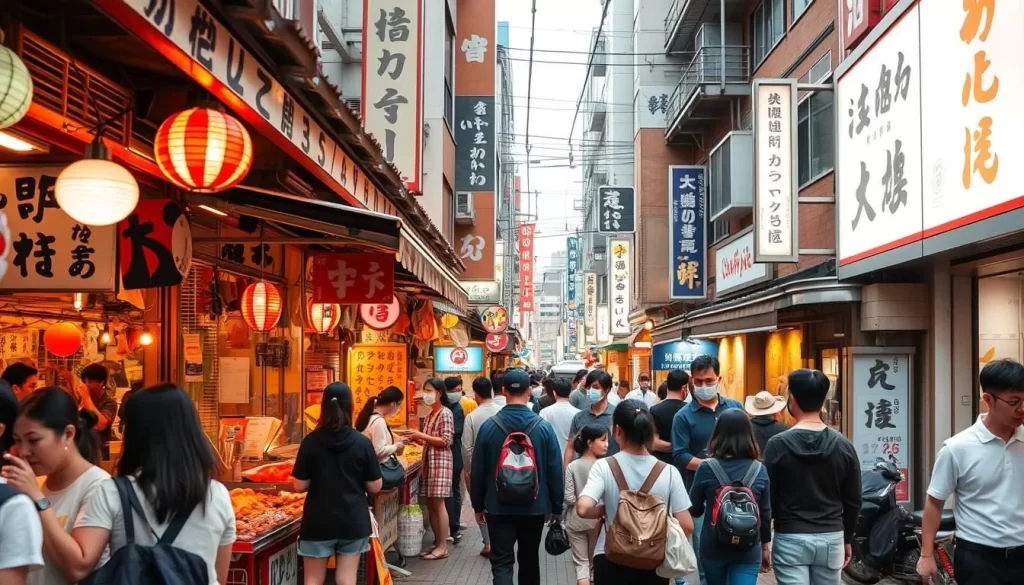
For a taste of old Tokyo, head to Ameya-Yokocho Market, a vibrant shopping paradise. Located near Ueno Station, this outdoor market is a must-visit for anyone looking for a unique shopping experience. With almost 200 vendors selling everything from candy and souvenirs to clothing and shoes, you’re sure to find something that catches your eye.
Ameya-Yokocho, commonly referred to as “Ameyoko,” has a rich history dating back to the post-World War II era when it originated as a black market. Over time, it has evolved into one of Tokyo’s most vibrant shopping streets, stretching from Ueno to Okachimachi stations. The market is characterized by its lively atmosphere, with vendors enthusiastically calling out to attract customers, creating a distinctly different shopping experience from Tokyo’s polished department stores.
Food Vendors and Local Delicacies
One of the highlights of Ameya-Yokocho Market is its diverse array of food vendors offering local delicacies. From fresh seafood and fruit to traditional Japanese sweets and international cuisine, there’s something to satisfy every palate. As you walk through the market, the enticing aromas of various dishes will tempt you to try some of the local specialties.
Bargain Shopping Tips
Ameya-Yokocho Market is a shopper’s paradise, with many stalls offering negotiable prices, particularly for items like clothing, bags, and souvenirs. To get the best deals, consider visiting on weekday afternoons when the market is less crowded, or near closing time when vendors may offer deeper discounts to clear perishable goods. Don’t be afraid to politely haggle, especially when purchasing multiple items.
Whether you’re looking for unique souvenirs, trying local food, or simply soaking up the lively atmosphere, Ameya-Yokocho Market is a place that promises an unforgettable experience. With its rich history, vibrant street culture, and wide range of shopping and dining options, it’s a destination that should be on every visitor’s itinerary when in Tokyo.
Tokyo Skytree: Panoramic Views of the City
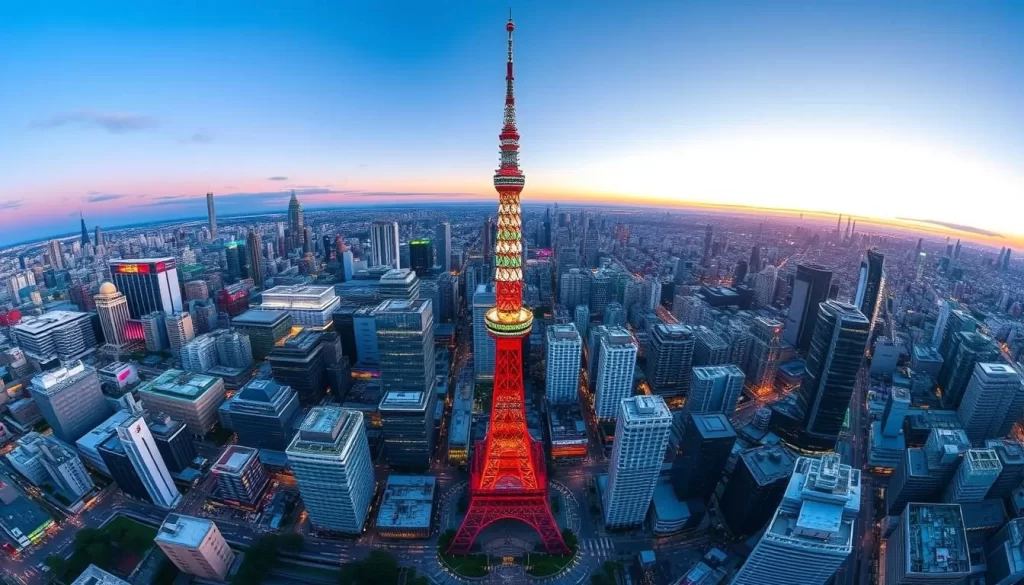
Tokyo Skytree stands tall as a modern icon of Tokyo, offering panoramic views that are simply unforgettable. At 634 meters, it’s the tallest structure in Japan and the second tallest in the world, making it a must-visit place for anyone traveling to Taitō-ku, Tokyo.
Observation Decks and Photo Opportunities
The tower boasts two observation decks: the Tembo Deck at 350 meters and the Tembo Galleria at 450 meters. From these decks, you can enjoy breathtaking 360-degree views of the city, taking in Tokyo’s vast urban landscape. On a clear day, the visibility can extend up to 70 kilometers, allowing you to see landmarks like Mt. Fuji, Tokyo Bay, and the sprawling metropolitan area. It’s the perfect place to appreciate the scale of one of the world’s largest cities.
For photography enthusiasts, Tokyo Skytree offers numerous opportunities to capture stunning views of the cityscape, especially during sunset when the urban sprawl begins to illuminate, or at night when Tokyo transforms into a sea of twinkling lights. The higher you go, the more spectacular the view becomes, making it a photographer’s paradise.
Solamachi Shopping Complex
At the base of Tokyo Skytree lies the Solamachi Shopping Complex, a vast entertainment hub housing over 300 shops and restaurants across 32 floors. Here, you can find everything from traditional Japanese crafts and anime merchandise to exclusive Tokyo Skytree souvenirs, making it a shopper’s delight. Whether you’re looking for a unique gift or simply want to indulge in some retail therapy, Solamachi is the shopping destination to be.
With its unique blend of modern attractions and traditional charm, Tokyo Skytree and its surrounding complex offer a comprehensive experience that showcases the best of Tokyo. As you explore this iconic tower and its environs, you’ll discover why it’s a standout place to visit in Taitō-ku.
Sumida River and Riverside Park
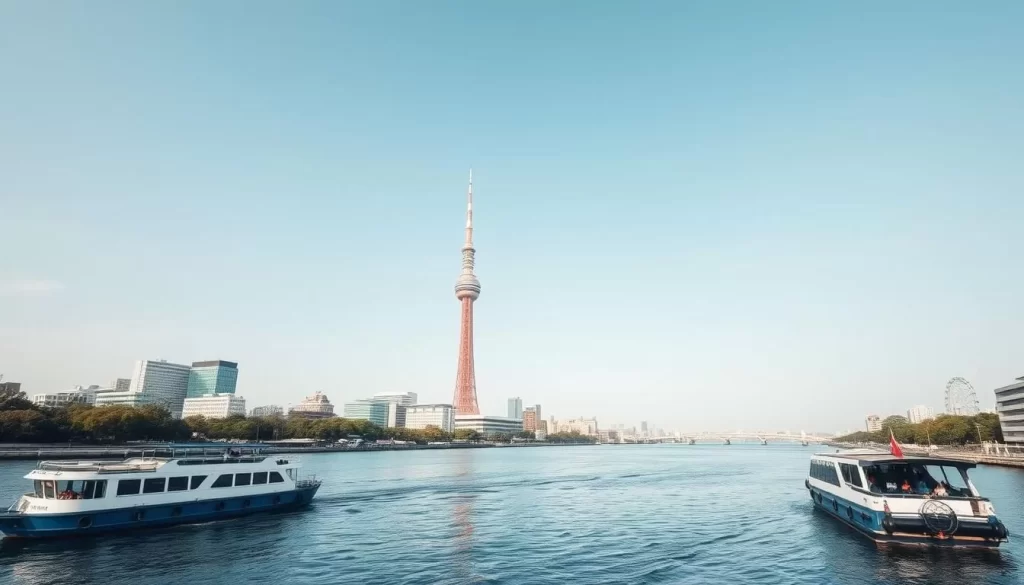
Sumida River, a significant waterway since the Edo period, is now a popular destination for river cruises and scenic walks. The river has played a central role in Tokyo’s development, serving as a vital transportation route and now offering one of the most scenic waterways in the city.
River Cruises and Boat Tours
Experience the city from a different perspective with a Sumida River cruise. Traditional yakatabune boats offer dinner cruises that combine sightseeing with authentic Japanese cuisine and unlimited drinks, making for a perfect evening activity. Modern water buses, or suijo buses, connect major tourist spots along the river, including Asakusa, Hamarikyu Gardens, and Odaiba, serving both as a practical transportation option and a sightseeing opportunity.
As you glide along the river, you’ll witness the contrasting architecture of traditional and modern Tokyo, with the landmark Tokyo Skytree standing tall. A dinner cruise on the Sumida River is an unforgettable experience, offering a unique view of the city’s skyline.
Riverside Walking Paths
Sumida Riverside Park stretches along both banks of the river, offering well-maintained walking and cycling paths. These paths provide excellent views of Tokyo Skytree and the surrounding cityscape, making them popular among joggers and photographers alike.
The riverside area becomes especially vibrant during cherry blossom season when the trees lining the water burst into pink blooms, and during the Sumida River Fireworks Festival in July, when spectacular pyrotechnics illuminate the summer sky. For photography enthusiasts, the riverside paths offer numerous spots to capture iconic Tokyo views, particularly at sunset when the city lights begin to reflect on the water’s surface.
Whether you’re interested in a leisurely walk, a cycling trip, or a relaxing cruise, Sumida River and Riverside Park offer a serene escape from the bustling city, providing a unique perspective on Tokyo’s blend of traditional and modern places.
Yanaka Ginza: Old Tokyo Atmosphere
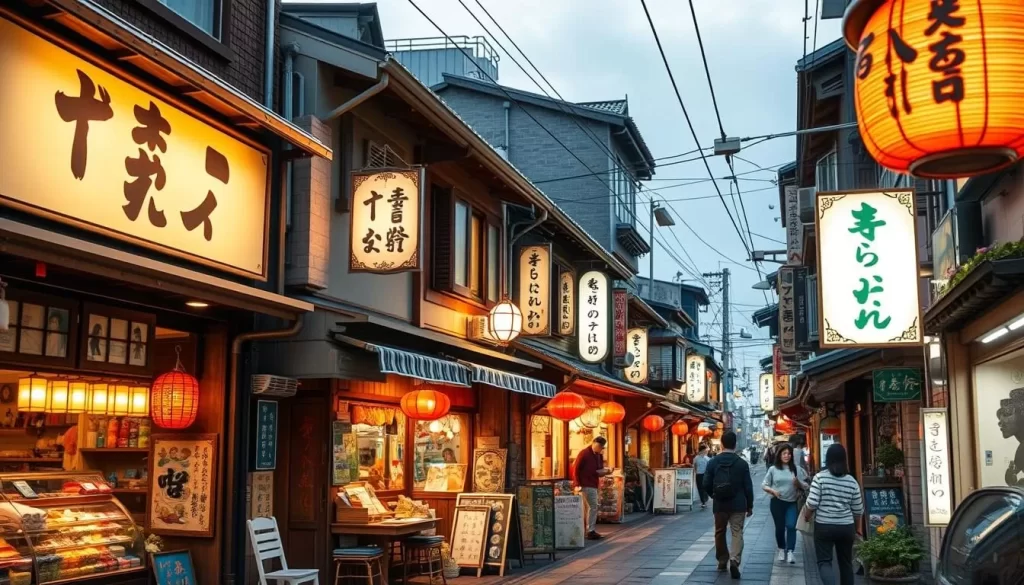
Discover the charm of Yanaka Ginza, a nostalgic shopping street that embodies the spirit of old Tokyo. This traditional area is a must-visit destination for anyone looking to experience the authentic flavor of Japan’s capital city.
Yanaka Ginza is known for its traditional shops, where you can find everything from handcrafted items to local pottery and freshly made senbei (rice crackers). The street is lined with charming storefronts, creating a nostalgic atmosphere that’s a delight to explore.
Traditional Shops and Cat Spotting
One of the unique aspects of Yanaka Ginza is its feline residents, earning it the nickname “Cat Town.” As you stroll along the street, you’ll come across cat-themed shops and street art, as well as actual cats lounging throughout the neighborhood.
The shops in Yanaka Ginza are a treasure trove of traditional goods, including local handicrafts and specialty foods. Be sure to visit the senbei shops, where you can watch the crackers being grilled right before your eyes.
Yuyake-dandan Steps
At the end of the shopping street, you’ll find the iconic Yuyake-dandan Steps, also known as the “Sunset Steps.” This picturesque stairway offers a perfect vantage point for watching the sun set over the old-style rooftops, creating a romantic atmosphere that’s popular with locals and visitors alike.
The Yuyake-dandan Steps are a great place to visit just before dusk, when the light is golden and the atmosphere is particularly magical. It’s a great spot to bring someone special, making it a memorable place to enjoy the old Tokyo style.
Ueno Zoo: Japan’s Oldest Zoological Garden
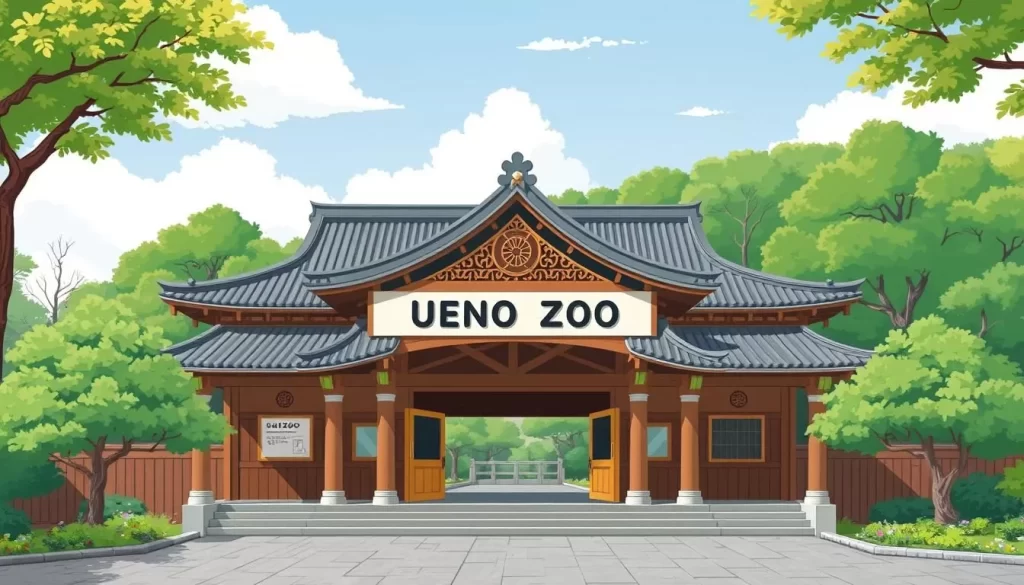
As Japan’s oldest zoological garden, Ueno Zoo has been a beloved attraction in Tokyo since its establishment in 1882. Nestled within the expansive Ueno Park, the zoo is home to a diverse range of animals from across the globe, making it a fascinating place for visitors of all ages.
The zoo’s most significant draw is undoubtedly its giant pandas, a pair from China named Rī Rī and Shin Shin, who have not only captivated the nation with their presence but have also contributed to a successful breeding program. This has made Ueno Zoo a home to these cherished animals and their offspring, offering a unique opportunity for visitors to observe these gentle giants up close.
Giant Panda Habitat
The Giant Panda Habitat at Ueno Zoo is designed to mimic the pandas’ natural environment, providing them with a comfortable and spacious living area. Visitors can observe Rī Rī and Shin Shin as they roam, eat, and play, offering a glimpse into the lives of these remarkable animals from the world over.
East and West Gardens Highlights
Ueno Zoo is divided into East and West Gardens, each offering unique experiences. The West Garden, being the older section, houses the Gorilla Woods, Tiger Forest, and Bear Mountain, alongside a serene Japanese-style garden. In contrast, the East Garden features modern, open-concept habitats such as the Animals of Africa area and the Children’s Zoo, where kids can interact with domesticated animals. The two gardens are connected by a charming monorail that offers elevated views of the zoo and park surroundings.
Visiting Ueno Zoo is not just about seeing animals; it’s also an opportunity to explore historic structures like the Main Gate and the Five-Storied Pagoda, originally part of the Kaneiji Temple complex. This blend of wildlife and history within Ueno Park makes for a truly enriching experience.
Shitamachi Museum: Glimpse into Old Tokyo Life
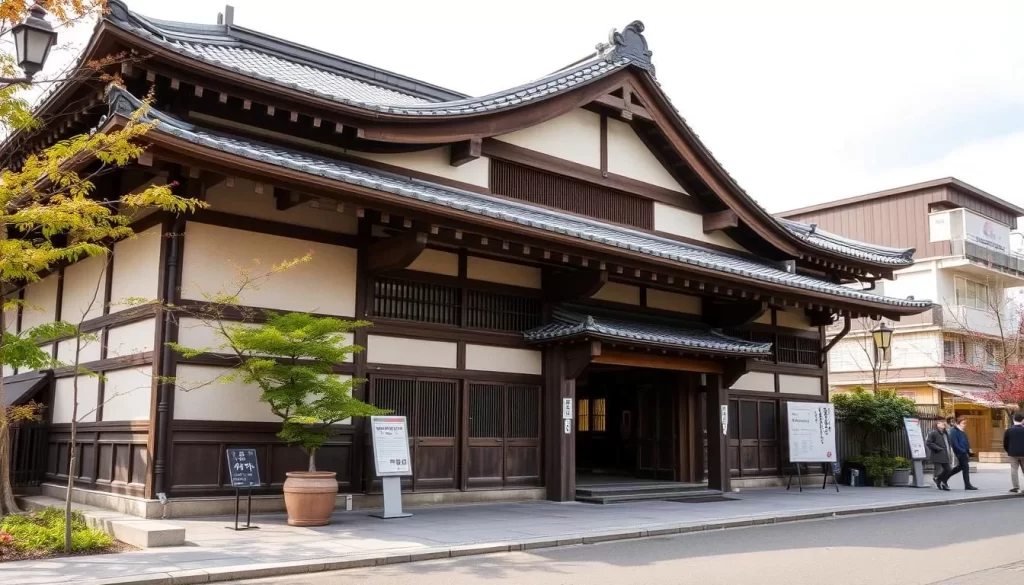
Discover the charm of old Tokyo at the Shitamachi Museum, a cultural gem that showcases the city’s rich history. The museum is dedicated to preserving the heritage of Shitamachi, or the “lower city,” where the non-elite lived. As you explore the museum, you’ll gain insight into the daily life of ordinary Tokyoites during the Edo period (1603-1868) and early 20th century.
The museum’s first floor features meticulously recreated life-sized models of nagaya (tenement houses) from the Taisho period (1912-1926). You can walk through authentic living spaces, complete with period furniture, household items, and traditional tools that illustrate the modest but ingenious lifestyle of common people.
Edo Period Exhibits
The Edo period exhibits showcase the vibrant merchant culture that developed during Japan’s isolation period. You’ll see displays of traditional commerce, entertainment, and the distinctive fashion of the era that influenced much of what we now consider classic Japanese aesthetics. The exhibits provide a unique glimpse into the history of Tokyo’s “low city.”
Traditional Crafts and Workshops
The museum offers an engaging educational experience through its interactive elements and regular workshops. You can handle replicas of Edo period items, try on traditional clothing, and participate in demonstrations of crafts and games. The workshops allow you to connect with historical techniques that have been preserved through generations, including paper-making, woodblock printing, and simple toy construction.
By visiting the Shitamachi Museum, you’ll gain a deeper understanding of Tokyo’s museum and its significance in preserving the city’s cultural heritage. The museum is a must-visit destination for anyone interested in exploring Tokyo’s history and culture.
Kappabashi Street: Kitchen Town for Culinary Enthusiasts

Kappabashi Street, also known as “Kitchen Town,” is a kilometer-long street filled with kitchen supplies and culinary delights. This culinary hub is a must-visit destination for professional chefs, restaurant owners, and food enthusiasts alike.
As you walk along Kappabashi Street, you’ll discover over 170 specialized shops catering to the needs of culinary professionals. From restaurant supplies to food models, the street offers a wide range of products that are sure to impress.
Restaurant Supplies and Plastic Food Models
One of the main attractions on Kappabashi Street is the incredibly realistic plastic food models (sampuru) used by Japanese restaurants to display their menu items. You can even purchase these as unique souvenirs or participate in workshops to make your own.
Beyond food models, the street features shops selling every imaginable kitchen tool and restaurant supply, from traditional Japanese cookware like donabe clay pots and bamboo steamers to modern professional equipment.
Japanese Knives and Cookware
Professional-grade Japanese knives are a highlight of Kappabashi, with specialized shops offering everything from affordable starter blades to handcrafted artisanal pieces that represent the pinnacle of Japanese craftsmanship.
For those interested in Japanese ceramics, several shops on Kappabashi Street offer beautiful yet affordable tableware, including distinctive regional styles of plates, bowls, and serving dishes used in traditional Japanese restaurants.
Must-Try Food Experiences in Taitō-ku
As you explore Taitō-ku, you’ll discover a world of authentic food experiences that showcase the best of traditional Japanese cuisine. This historic district is home to a diverse range of restaurants, shops, and street vendors serving up local specialties and traditional treats.

Taitō-ku offers some of Tokyo’s most authentic food experiences, from centuries-old confectioneries serving traditional wagashi (Japanese sweets) to modern interpretations of classic dishes in atmospheric settings. You can sample a variety of traditional Japanese sweets and snacks, crafted using time-honored techniques and seasonal ingredients.
Traditional Japanese Sweets and Snacks
Traditional Japanese sweets shops in the area, some operating for generations, craft seasonal wagashi like daifuku (mochi with sweet fillings), yokan (sweet bean jelly), and dorayaki (red bean pancake sandwiches). These sweet treats are not only delicious but also beautifully presented, making them a great souvenir or snack to enjoy while exploring.
Asakusa’s Best Restaurants
Asakusa’s restaurant scene ranges from historic establishments serving perfect tempura and unagi (eel) to hidden izakayas where locals gather for sake and small plates. Look for restaurants with red lanterns and noren curtains for authentic experiences. You can enjoy a unique dining experience at one of the traditional restaurants along Hoppy Street in Asakusa, where you can savor motsuyaki (grilled offal) paired with hoppy, a beer-like beverage that’s a local specialty.
Taiyaki and Street Food Delights
Street food is a highlight of the district, with taiyaki (fish-shaped cakes with sweet fillings) being a must-try treat. Taiyaki Sharaku near Sensō-ji offers some of the best taiyaki, made fresh throughout the day with crispy exteriors and generous fillings. Don’t miss trying freshly made senbei (rice crackers) on Nakamise Shopping Street, where you can watch artisans grill and season these crispy treats right before your eyes.
Whether you’re in the mood for traditional sweets, fresh street food, or a unique dining experience, Taitō-ku has something to offer. Be sure to explore the various shops and places throughout the district to discover the full range of culinary delights.
Seasonal Festivals and Events in Taitō-ku
As you explore Taitō-ku, you’ll discover a vibrant calendar of events that reflect Japan’s rich cultural heritage. The district is home to numerous festivals and events throughout the year, each offering a unique glimpse into the local culture and traditions.
Taitō-ku’s festivals are deeply rooted in its historic temples and seasonal changes, making every visit a memorable experience. From the grandeur of Sanja Matsuri to the serene beauty of the Ueno Toshogu Shrine Spring Peony Festival, there’s always something to look forward to.
Sanja Matsuri: Asakusa’s Biggest Festival
Sanja Matsuri, held annually in May at Asakusa’s Sensō-ji Temple, is one of Tokyo’s three greatest festivals. This spectacular event features over 100 mikoshi (portable shrines) carried through the streets by thousands of participants in traditional costume, showcasing community spirit and religious devotion. As you watch the procession, you’ll be surrounded by people in vibrant attire, creating an electrifying atmosphere.
- Experience the excitement of Sanja Matsuri, with its rich cultural traditions and community participation.
- Witness the elaborate mikoshi floats being paraded through the grounds of Sensō-ji Temple.
Ueno Toshogu Shrine Spring Peony Festival
The Ueno Toshogu Shrine Spring Peony Festival is a cherished spring event, celebrating the beauty of peonies in full bloom. For over 40 years, this festival has transformed the shrine grounds with hundreds of blooming peonies in April and May, complemented by traditional dance performances and tea ceremonies. It’s a serene and picturesque celebration that you won’t want to miss.
During the festival, you can enjoy the lovely peonies, learn about their cultural significance, and participate in traditional tea ceremonies.
Summer Fireworks Along Sumida River
Summer in Taitō-ku is highlighted by the spectacular Sumida River Fireworks Festival, a tradition dating back to the Edo period. Approximately 20,000 fireworks illuminate the night sky above the river, creating a breathtaking spectacle. You can enjoy this display from Sumida Park or aboard a yakatabune boat, surrounded by people from all walks of life.
The Sumida River Fireworks Festival is a must-experience event, offering a unique perspective on Tokyo’s summer celebrations.
In conclusion, Taitō-ku offers a diverse range of festival and events throughout the year, each with its unique charm and cultural significance. Whether you’re interested in history, culture, or simply enjoying the local atmosphere, Taitō-ku has something for everyone. As you plan your visit, be sure to check the local calendar to catch one of these exciting events and experience the vibrant spirit of the district.
Where to Stay in Taitō-ku
From historic ryokans to modern hotels, Taitō-ku is home to a wide variety of accommodations that cater to different tastes and budgets. Whether you’re looking for a traditional Japanese experience or a stylish place to stay, Taitō-ku has something for everyone.
Traditional Ryokans and Japanese Inns
For a truly immersive cultural experience, consider staying at a traditional ryokan. Sawanoya Ryokan is a great example, offering Japanese-style rooms with tatami mats and futon bedding, as well as communal baths. Visitors can enjoy kaiseki meals, which are multi-course dinners featuring local seasonal ingredients. Family-run minshuku (Japanese bed and breakfasts) are another affordable option, providing a homey atmosphere and insider tips from local hosts.
Staying at a traditional ryokan or minshuku allows you to experience Japanese hospitality as it has been practiced for centuries. You’ll have the opportunity to interact with locals, learn about their customs, and enjoy a unique traditional Japanese experience.
| Accommodation Type | Features | Price Range |
|---|---|---|
| Traditional Ryokan | Tatami-matted rooms, futon bedding, communal baths, kaiseki meals | High-end |
| Minshuku | Traditional Japanese rooms, home-cooked meals, local tips | Mid-range |
| Modern Hotels | Contemporary design, modern amenities, spectacular views | Mid-range to High-end |
Modern Hotels with Historic Charm
If you prefer modern amenities with a touch of Japanese style, boutique hotels like The Gate Hotel Kaminarimon are an excellent choice. This hotel blends contemporary design with traditional elements and offers spectacular views of nearby landmarks like Tokyo Skytree or Sensō-ji Temple. Agora Place Asakusa is another stylish option, featuring modern concepts that make it stand out in the hotel market.
When choosing your accommodation, consider the location carefully. Staying near Asakusa puts you in the heart of historic Tokyo, with easy access to temples and traditional shops. On the other hand, staying near Ueno offers proximity to museums, Ueno Park, and excellent transportation connections, making it a convenient home base for your explorations.

In conclusion, Taitō-ku offers a diverse range of accommodation options that cater to all budgets and preferences. Whether you’re looking for a traditional Japanese experience or a modern hotel with historic charm, you’ll find the perfect place to stay in this vibrant district.
Day Trips from Taitō-ku
With its excellent transportation links, Taitō-ku allows visitors to easily discover other fascinating areas of Tokyo. The district’s strategic location makes it an ideal base for exploring the city’s diverse neighborhoods and attractions.
Nearby Tokyo Neighborhoods Worth Exploring
Just across the Sumida River, the Tokyo Skytree Town area offers a modern contrast to Taitō-ku’s historic charm. You can access this area via a short walk or a single train stop. Tokyo Skytree, Japan’s tallest structure, is surrounded by the Solamachi shopping complex and the Sumida Aquarium, making for a great day out.
Other neighborhoods worth visiting include Akihabara, famous for its electronics and anime culture, and Ginza, known for its high-end shopping and nightlife. Akihabara is just a few minutes away from Ueno Station by train, while Ginza and Roppongi are accessible within 20-30 minutes by subway.
| Neighborhood | Travel Time from Taitō-ku | Main Attractions |
|---|---|---|
| Akihabara | A few minutes from Ueno Station | Electronics, anime, gaming arcades |
| Ginza | 20-30 minutes by subway | High-end shopping, art galleries, international dining |
| Roppongi | 20-30 minutes by subway | Nightlife, upscale dining, art museums |
Quick Excursions Outside the City
If you’re looking to escape the urban city for a day, there are several options for quick excursions. Nikko National Park, with its stunning mountain landscapes and historic shrines, is approximately a 2-hour train ride away. This UNESCO World Heritage site offers a refreshing contrast to the urban places of Tokyo.
Another popular day trip destination is Kamakura, often referred to as “Little Kyoto.” Located about 1.5 hours away by train, Kamakura is famous for its Great Buddha statue, numerous temples, and beautiful beaches. It’s an ideal destination for those looking to explore traditional Japan without venturing too far from Tokyo.
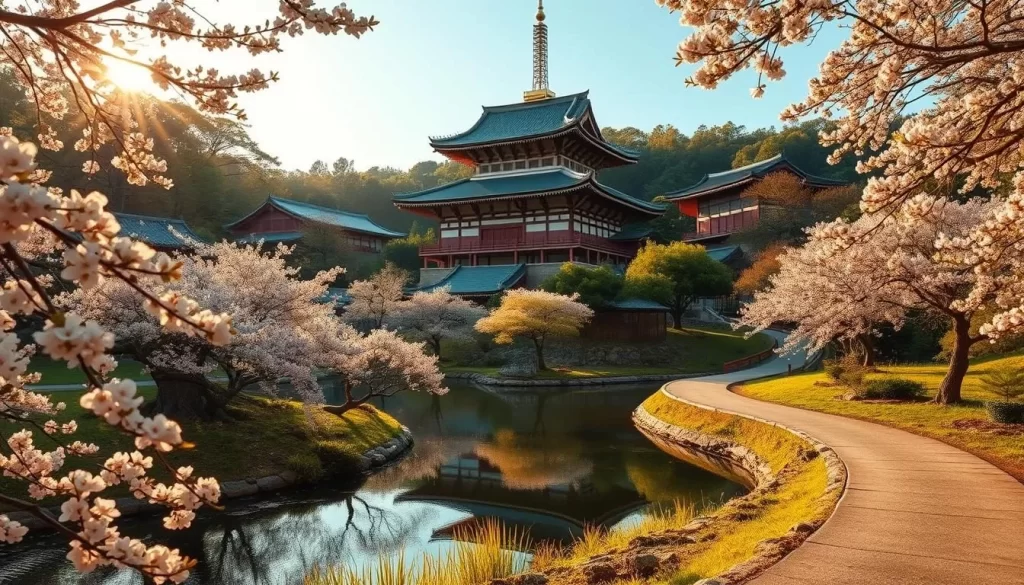
These destinations offer a glimpse into Japan’s rich cultural heritage and natural beauty, making them perfect for visitors looking to explore beyond Taitō-ku.
Planning Your Perfect Visit to Taitō-ku
With its unique blend of traditional temples, modern museums, and beautiful parks, Taitō-ku is a district that promises an unforgettable experience with proper planning. To make the most of your visit, consider allocating at least 2-3 days to explore the area thoroughly.
Start by dedicating a day to the Asakusa temple area, allowing you to soak in the historic ambiance and visit iconic spots like Sensō-ji Temple before the crowds arrive. Another day can be spent exploring Ueno Park and its numerous museums, such as the Tokyo National Museum, which offers a deep dive into Japanese culture.
The best things to do in Taitō-ku are best experienced during the spring (March-May) and fall (October-November), when the weather is pleasant and the district is adorned with cherry blossoms or autumn colors. However, each season offers unique cultural experiences and festivals that are worth exploring.
To save money and time, consider purchasing a combination ticket for Ueno Park’s museums and invest in a Tokyo subway pass for unlimited travel between the district’s various attractions. As you plan your itinerary, remember that many museums are closed on Mondays, while temples and shrines are typically open daily.
As you explore Taitō-ku, balance your visit to major attractions with time to wander the atmospheric backstreets. This will allow you to discover hidden temples, local shops, and authentic eateries that provide a deeper understanding of this historic district. With these tips, you’ll be well on your way to experiencing the best things that Taitō-ku has to offer, making your visit a memorable one for visitors from around the world.
By planning your visit strategically, you’ll not only enjoy the district’s many things to do but also gain a richer understanding of its culture and history. Whether you’re strolling through Ueno Park, visiting a local temple, or exploring a museum, Taitō-ku promises a diverse and enriching experience for all visitors.
The above is subject to change.
Check back often to TRAVEL.COM for the latest travel tips and deals.






